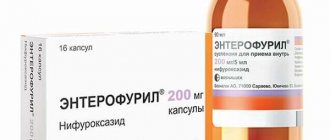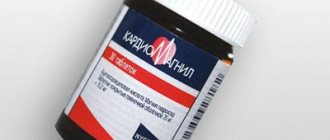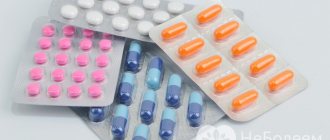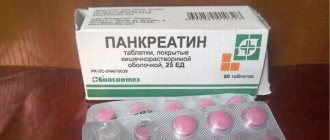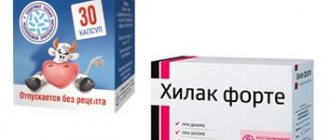The need to take antibiotics usually arises in the treatment of colds and other diseases of bacterial etiology. But a significant drawback of antibacterial therapy is the absolute lack of selectivity in antibiotic agents. That is, they have a detrimental effect not only on pathological, but also on beneficial bacteria in the human body. As a result, antibiotic treatment most often ends with serious disturbances in the natural microflora of the stomach and intestines. This is manifested by dysbacteriosis, which is characterized by all kinds of disorders of the gastrointestinal tract - nausea, vomiting, diarrhea, flatulence and others.
Today, such conditions are successfully treated with eubiotics - dietary supplements containing live bacteria and their metabolic products.
The drug Linex in the group of these drugs occupies one of the leading positions in popularity and effectiveness. Here we will tell you how to take Linex with antibiotics.
Composition and pharmacological action of Linex
According to the instructions for use, one Linex capsule contains three types of lactic acid bacteria, without which the normal functioning of the digestive system is impossible: lactobacilli, bifidobacteria and enterococci. The action of all these beneficial bacteria in the digestive tract is:
- in shifting the pH factor towards the acidic side, which helps to suppress pathogenic microorganisms, but at the same time – providing a favorable environment for digestive enzymes;
- in participation in the metabolic processes of bile acids and pigments;
- participation in the synthesis of ascorbic acid, vitamins K and group B and other useful substances, which increases the body’s resistance to the adverse effects of external factors;
- synthesis of substances with antibacterial action;
- in enhancing immunity.
While taking antibacterial drugs, the use of this eubiotic can significantly reduce the negative impact of antibiotics on the microflora. Moreover, it is possible to significantly speed up the healing process by increasing the body’s immune reactivity.
How to drink Linex correctly during antibiotic therapy
To achieve a therapeutic effect from Linex when taking antibiotics, you must follow the recommendations specified in the instructions for use.
Should I drink while taking antibiotics or after finishing antibiotic therapy?
There are no clear restrictions regarding the combined use of Linex and the use of antibiotics - taking the eubiotic can be started on the very first day of antibiotic therapy. If this is not done, nothing irreparable will happen. The balance of beneficial bacteria in the intestinal microflora can be restored even after the end of antibacterial therapy. But during this time, the patient can fully experience the side effects of antibiotics:
- loss of appetite;
- fatigue, general weakness;
- allergic skin rashes;
- skin itching;
- alternating constipation and diarrhea;
- bloating and flatulence;
- pain in the epigastric region, aggravated by palpation;
- dryness and metallic taste in the mouth.
All this makes us think about the advisability of simultaneous, or rather parallel, taking antibiotics and Linex.
Recommended Dosages
Linex is available in the form of capsules with a powdery substance, coated with a gelatin shell. The dosage of the drug depends on the age of the patient.
| Patient age | Number of capsules per 1 dose | Number of appointments per day |
| Teenagers from 12 years old and adults | 2 capsules | 3 times |
| Children 2-12 years old | 1-2 capsules | 3 times |
| Children from birth to 2 years | 1 capsule | 3 times |
Interaction with other medications and other features of administration
The annotation for the drug states that Linex interacts well with other medications, including chemotherapy drugs and antibiotics. The only caveat is that the time difference between taking these medications must be at least one hour: if the antibiotic is taken strictly according to the clock, then Linex should be taken 1-2 hours later.
There is a warning about the incompatibility of taking Linex with alcoholic beverages; you should not take the drug with hot liquids - beneficial lactobacilli may die at high temperatures. The most correct thing is to take the medicine with plain water (and not milk, as many do).
In addition, to maintain the effectiveness of bifidobacteria and other beneficial microorganisms that make up eubiotics, you should not drink this medicine under the following circumstances:
- for chronic diseases (AIDS, diabetes);
- increase in body temperature to 38 and above;
- detection of blood or mucus traces in the stool;
- with diarrhea lasting more than 2 days against the background of severe pain in the stomach, weight loss and water-salt imbalance (dehydration).
The above symptoms should be a reason to immediately consult a doctor.
Side effects
There are no recorded adverse reactions when taking Linex after poisoning. The manufacturer's instructions allow taking the medication during pregnancy and lactation. Do not prescribe if a child is poisoned by Linex, if there is hypersensitivity to the ingredients included in the product, as well as with a histamine (allergic) reaction to lactose contained in dairy products.
There have been no cases of Linex overdose due to poisoning. If the patient has taken one extra capsule, there is no cause for concern. But you should not constantly exceed the recommended dose, since it is difficult to predict the individual reaction of the body in such a situation.
It is forbidden to drink Linex with alcohol, black tea, coffee or sweet soda. They reduce the effectiveness of the drug.
How long to take Linex
Patients often ask questions about how much Linex to drink after antibiotics or whether its use should be stopped immediately after the end of antibacterial therapy. Your doctor should tell you in detail how to take the drug correctly and how long it takes to restore the normal microflora of the digestive tract. As a rule, the treatment regimen with Linex depends on the duration of antibacterial therapy and the duration should exceed the course of antibacterial therapy by 2 times. That is, if antibiotics were taken for 7 days, then the course of treatment with Linex should be 14 days.
But we should not forget about the individual characteristics of each patient, which may require significant adjustments in dosage and timing of treatment. Therefore, any issues related to taking Linex and antibiotics must be resolved in the doctor’s office.
In modern therapy it is impossible to do without the achievements of the twentieth century - antibiotics. Over time, doctors began to identify more and more negative qualities, but an equivalent replacement has not yet been obtained. This means that you need to learn to eliminate negative consequences for the body. One of the helpers is the probiotic Linex. Instructions for use with antibiotics are not very informative, limited to good compatibility and the need for an interval between doses.
We will present updated information and opinions obtained on the basis of the practical experience of doctors in treatment with antibacterial drugs. We will consider only the effect of the group’s products on the intestinal flora, without touching on the general spectrum of action on pathogenic microorganisms.
Preventive measures
Following simple rules of prevention will prevent the accumulation of toxins and poisoning:
- High-quality heat treatment of products;
- Compliance with storage rules and periods;
- Consumption of proven plants and mushrooms;
- Drinking boiled water and milk;
- Thorough hand disinfection, washing fresh fruits and vegetables;
- High-quality cleaning of cutlery;
- Destruction of cockroaches, mice and rats – carriers of infectious diseases;
- Prohibition on eating food past its expiration date.
Why drink Linex after antibiotics: beneficial properties of dietary supplements
In the instructions for each antibiotic, in the “side properties” section, in addition to allergies, symptoms familiar to many are described:
Their appearance against the background of improved well-being after illness is perceived as a disaster. The person is weakened, the body does not have enough protection for an additional fight. Young children and older people are especially hard hit.
It has been established that the symptoms are caused by the ability of antibiotics, simultaneously with the destruction of pathogenic microorganisms, to suppress the normal intestinal microflora. According to scientists, up to 30% of patients suffer from digestive disorders after treatment. According to the degree of negative impact, drugs of the penicillin group destroy bifidobacteria and lactobacilli to the maximum; the effect is less pronounced for quinolones, lincomycins, macrolides, and cephalosporins.
The intestines are damaged regardless of what was treated - bronchitis, sore throat or otitis media. In response, opportunistic flora grows on the mucous membrane, which does not have sufficient beneficial properties, and does not exclude the possibility of additional infection. A violation of the ratio of different types of bacteria is called dysbiosis. This is a term, not a diagnosis. Whether it turns into pathology depends on the patient’s immunity and the ability to ensure the restoration of optimal balance.
Created synthetic and semi-synthetic antibacterial drugs have less negative effects. Some drugs are produced in different pharmaceutical companies and countries, improved in quality composition, and replace the previous base. The latest generation of drugs treats the body's microflora most carefully.
Rules for taking the drug during antibiotic therapy for adults
To ensure the maximum result of joint treatment, you should consult with specialists and do not try to independently change the course, dosage or refuse antibacterial drugs, or violate the correct regimen for using Linex. It is impossible to take both drugs in parallel, that is, independently of each other.
Is it possible to take Linex together with antibiotics?
It has been established that the use of Linex against the background of antibiotics does not reduce their effect and does not participate in the development of resistant strains of pathogenic microorganisms. It is important to consider that the probiotic only acts when it enters the intestines with food. This means that it is correct to take it during or immediately after finishing a meal.
Not all consumers pay attention to the fact that some antibiotics are also taken with food (for example, Amoxiclav). This is justified by the task of reducing the risk of negative effects on the gastrointestinal tract. You have to follow a mandatory schedule for the sequence of drug use and clearly determine what to drink first and what to drink later.
There are different options for how you can take Linex with antibiotics:
- start using Linex a week before the antibiotic and stop 7 days later;
- take a probiotic from the first day of prescription;
- wait until the end of the course of antibiotic therapy and treat with probiotics only if signs of dysbiosis appear.
Not a single instruction gives clear instructions. But the third option can be considered the most acceptable. After all, dysbiosis does not develop in all cases. Nothing irreparable will happen unless you start taking a probiotic immediately.
Is it possible to consider additional allergization of the body advisable?
Officials insist on maintaining a break between the use of the antibiotic and Linex: the first should be taken 3 hours before the probiotic (there is an opinion that 1.5-2 hours is enough). It is easier to decide on medications taken once a day. For example, take the full dose of Sumamed in the morning an hour before breakfast or 2 hours after, and add Linex to lunch and dinner.
Dosage regimens: doses and duration of treatment
The dose for an adult is determined by the instructions:
- Linex capsules should be taken 2 three times a day.
- When choosing Linex Forte, it is enough to drink one 2-3 times a day.
- In a sachet, the powder is diluted in a tablespoon of water and taken 2-3 times during meals.
If a probiotic is prescribed for the purpose of prevention (there are no symptoms of dysbiosis, but the patient is very afraid), then 1 Forte capsule per day is enough.
How long to continue therapy depends on the effectiveness. It is impossible to predict in advance how long it takes to restore the flora. The standard regimen requires adding another 7-10 days to the duration of taking the antibiotic, sometimes it takes a month.
First aid
Prompt help for eating disorders is essential. After all, the sooner treatment was started, the faster the recovery will come. First aid for poisoning includes:
- Washing and cleansing the stomach. The gag reflex alone is not enough to completely cleanse the stomach of spoiled food. After gagging, you need to drink 0.5 ml of saline or soda solution. You can also use potassium permanganate. After this, vomiting is artificially induced. Ideally, in order for all the expired product to come out, you need to repeat the procedure until water without impurities begins to come out of the stomach. If there is no vomiting initially, this means that the spoiled product has already passed the stomach and is in the intestines.
- Stop dehydration. During intoxication, with vomiting and diarrhea, the body loses not only toxins and poisons. But it also loses some of the fluid that needs to be replenished. At home, it is recommended to replenish the fluid supply after each vomiting or bowel movement. Minimum two hundred grams, choice of: boiled water, still mineral water. Or a glucose-saline solution (for one liter of water - three tablespoons of sugar and one teaspoon of soda).
- Natural colon cleansing. Some people make the mistake of trying to stop diarrhea at home. Because bowel movement is the fastest way to remove toxins and waste from the body. If this is prevented, the patient may become constipated, and intoxication will only intensify. Antidiarrheal medications should only be taken as directed by a specialist.
Linex after antibiotics for children: dosage by age
The famous pediatrician and blogger Komarovsky believes that an imbalance in the intestinal flora can recover on its own after a few days. During this time, the child needs a gentle diet and rest. There is no point in rushing to prescribe probiotics and playing it safe.
The safety of Linex allows it to be used in drops starting from the neonatal period. The dosage is determined by the pediatrician.
- Infants and children from one to two years old are given 6 drops per feeding. Can be replaced with the contents of one capsule. It is stirred in milk, juice, water. Since the drug is tasteless, children take it without whims. If the product is purchased in a sachet, then one sachet is diluted.
- For preschoolers (from two to seven years old), the dose is increased to 2-3 capsules (sachets) per day.
- After 6 years, it is allowed to take 1 capsule of Linex Forte.
- At 12 years of age and older, the dosage does not differ from that for adults.
additional information
There are quite a few different reviews about the effectiveness of taking Linex. Some patients doubt the benefits of the drug. Others emphasize tangible benefits. Perhaps the contraindications were not carefully read in the instructions, or the rules of administration were not followed. To do this, we will focus on the features.
Any form of the drug should not be taken with hot drinks (tea, coffee). Bacteria die at a temperature of 50 degrees, and the medicine becomes useless.
It is strictly not recommended to interrupt the course by drinking alcoholic beverages. Ethanol is an enemy of intestinal flora.
Linex is no exception to the general contraindications of probiotics for persons with hypersensitivity to the components and with congenital lactose intolerance. If diarrhea is often associated with the consumption of dairy products, then using the product is not recommended.
An allergic reaction when starting treatment simultaneously with antibiotic therapy is possible not to the probiotic, but to the drug.
The drug is not prohibited in any trimester of pregnancy or lactation. But women should consult their doctor first.
Particular attention is required when prescribing for immunodeficiency states (including AIDS) and for patients with diabetes mellitus.
If during therapy the following appeared:
- elevated temperature (38 degrees and above);
- pathological impurities in the stool (blood, pus, a lot of mucus),
then you need to see a doctor and talk about your symptoms.
With diarrhea lasting more than two days with frequent bowel movements, loss of fluid, doubts about dysbacteriosis arise. Rather, the symptoms are caused by the addition of an intestinal infection.
In case of increased sensitivity, you can choose probiotics from the group of less active Linex analogues:
- Hilak Forte is available in drops and sachets; it contains not live bacteria, but the aqueous substrate of their metabolism, including a beneficial strain of Escherichia coli, lactobacilli and enterococci. Contains lactose and flavoring additives. The product is contraindicated for persons with hypersensitivity. It is prescribed three times a day, the dosage is gradually reduced. Allowed from infancy.
- Acipol is a capsule preparation of kefir grains and live lactobacilli acidophilus in a gelatin shell. Indicated from three months, the capsule is opened and diluted like Linex.
- Bifiform - limited in antimicrobial action, includes bifidobacteria and enterococci, which quickly colonize the small and large intestines. Used to get rid of Helicobacter pylori infection. It does not contain lactose, so it is recommended for people with milk intolerance.
The urgent problem of antibiotic therapy in medicine has to be solved with the help of auxiliary probiotics. In order for the use to be appropriate and ensure results, you must first consult with your doctor, make sure that Linex is suitable, and take the drug correctly along with the main treatment.
Treating bacterial infections with antibiotics has a significant drawback. During therapy, not only pathological but also beneficial microorganisms are eliminated. This effect is compensated by taking probiotics, including Linex. You need to know how to take Linex with antibiotics before starting treatment.
Composition and principle of action of Linex
Linex is one of the popular probiotics designed to normalize intestinal microflora. It is available in capsule and sachet form for children.
What is Linux and its difference from Forte
According to the instructions for use, Linex contains three types of beneficial bacteria:
- enterococci;
- bifidobacteria;
- lactobacilli.
Additional capsule ingredients:
- potato starch;
- dextrin;
- magnesium stearate;
- lactose.
The contents of the capsules are a colorless powder that is odorless.
The shell contains:
Linex Forte is used after antibiotics to prevent dysbacteriosis . It contains bifidobacteria and lactobacilli in dosages much larger than in the main drug. This allows you to quickly establish intestinal function and creates the necessary conditions for the development of beneficial microorganisms.
Packaging can be 14 or 28 capsules. This type of drug is contraindicated for use by patients diagnosed with diabetes mellitus, children under 6 years of age, and those with fructose intolerance.
Important! Taking Linex significantly reduces the negative impact of antibiotics on the gastrointestinal tract.
Causes of dysbacteriosis
Dysbacteriosis is a typical consequence of treating a patient with antibiotics. Disturbances in the gastrointestinal tract associated with dysbiosis may be a consequence of the following factors:
- antibiotic treatment;
- stress;
- taking hormonal medications;
- disrupted diet;
- inflammatory processes affecting the intestines.
For your information! Different antibiotics can cause different patterns of dysbacteriosis.
Manifestations of dysbacteriosis
Since antibiotic treatment leads to the death of both beneficial and pathological bacteria, this can lead to dysbiosis.
Intestinal microflora disorders include:
Treatment of such conditions is carried out using dietary supplements containing live bacteria. Linex allows you to cope with the problem when taking antibiotics. According to statistics, 9 out of 10 patients develop unpleasant symptoms of dysbiosis if probiotics were not used in parallel during antibiotic treatment.
Participation of Linex in important processes in the body
In the gastrointestinal tract, this probiotic is involved in the following processes:
- increasing immunity;
- formation of antibacterial substances;
- synthesis of a number of vitamins that increase the body’s resistance to external adverse factors;
- bile acid metabolism;
- increase in pH level, etc.
Signs of alcohol poisoning
For alcohol poisoning, Linex is not always prescribed. If drinking alcohol causes stool problems, nausea or vomiting, the drug will help. But Linex is not compatible with alcohol. Therefore, the simultaneous use of medicine and alcohol is prohibited.
This is explained by the fact that alcohol causes systemic intoxication of the body. Healthy microflora takes the brunt of the attack. Drinking alcohol after taking Linex completely eliminates the therapeutic effect of the drug. And the load on the gastrointestinal tract increases under the influence of waste and toxins.
How should you take Linex while taking antibiotics?
Linex is usually prescribed along with antibiotics or after completing a course of antibacterial therapy. This is necessary in order to prevent disturbances in the functioning of the gastrointestinal tract or eliminate existing ones. Antibiotics can be prescribed to a patient for pneumonia, bronchitis, sore throat and in many other cases.
Consequences of taking antibiotics
Side effects from taking antibacterial drugs include the following symptoms:
- constipation;
- diarrhea;
- itching;
- allergic skin rashes;
- weakness;
- fatigue;
- decreased appetite;
- unpleasant taste in the mouth;
- abdominal pain;
- flatulence.
Linex has a convenient release form - capsules. For those who have difficulty swallowing them and small children, you can open them and use the contents diluted in water. If dysbiosis is accompanied by diarrhea, then in addition to using Linex, it is necessary to ensure that a sufficient amount of fluid enters the body.
Dosage
The required dosage of Linex is determined based on the patient’s age.
Number of capsules per dose
Number of appointments per day
Patients often have a question: how much Linex to take after antibiotics? The timing of taking the drug should be determined by the attending physician. Typically, the duration of treatment with a probiotic is approximately twice as long as the course of treatment with an antibacterial agent. So, when treated with an antibiotic for 1 week, the course of Linex should be 2 weeks . In accordance with the instructions for the drug, the duration of treatment with a probiotic can be up to a month of regular use.
Prevention
What should you do to avoid food poisoning? There are several basic rules, the observance of which will protect you from this scourge. Namely:
- Heat treatment.
- Storage rules - permissible temperature conditions and compliance with expiration dates.
- Eating proven edible mushrooms and plants.
- Boiling milk and water.
- Maintain personal hygiene and hygiene when preparing food - washing fruits and vegetables with running water, clean dishes, cutlery, etc.
- Thorough heat treatment of meat and fish products.
- It is mandatory to combat cockroaches, bedbugs, mice and rats, as they are carriers of infection and various diseases.
- It is prohibited to eat cooked food that can be stored for more than 3 days (even in the refrigerator).
Taking Linex with antibiotics for the treatment of children
With antibiotics, children can be prescribed Linex from the moment of birth . For babies in the first two years of life, sachets with powder for dilution in water or another liquid product can be used. If it is not possible to use this form of release, you can give the child the contents of the capsule, diluted in the same way, to drink.
From the age of 6 years, Linex Forte can be given to children if it is recommended by a doctor. Until this age, therapy only with Linex capsules or sachets is possible. And, starting from 12 years of age, for full treatment, a child must receive an adult dosage of both Linex and Linex Forte.
Taking Linex for treating adults
The regimen for taking a probiotic depends on the choice of drug for treatment (Linex or Linex Forte). For people with difficulty swallowing capsules, it is possible to use their contents and dilute them in non-hot water. The prescription of Linex can be preventive or play an important role in treatment.
Important! Linex is approved for use by children and pregnant women. But it is not advisable to decide to take the medicine on your own, since treatment with this drug can give an undesirable side reaction in the form of an allergy.
It is usually recommended for adults to take Linex with antibiotics from the first day of antibiotic treatment . In this case, taking a probiotic may be longer than treatment with an antibacterial agent by several days. If dysbiosis already exists, then the probiotic will need to be taken for a longer period of time. Preferably at least 4 weeks.
Regular Linex is prescribed to be taken 2 capsules at a time. Linex Forte after antibiotics - take 1 capsule. For prevention – 1 time a day, and for treatment – 1 capsule 2-3 times a day.
For your information! If necessary, adults can use even children's sachets for treatment.
Contraindications for use
Before taking Linex with antibiotics, you need to make sure there are no contraindications. You need to approach this especially responsibly in the case of small children and pregnant women. Note that the drug is not prohibited from being taken throughout the entire gestation period.
It is contraindicated to take all drugs in the Linex line if you are individually intolerant to their components. Pay attention to additional components. Probiotics are not prescribed to individuals who do not consume dairy products for health reasons. Taking Linex Forte is contraindicated for patients with diabetes mellitus and people with fructose intolerance, as well as for children under 6 years of age. The pediatric form of the medication is intended for use after consultation with a doctor.
Interaction of Linex with other drugs during antibacterial therapy
It is possible to take Linex with antibiotics and chemotherapy drugs without loss of effectiveness if certain rules are followed. There were no undesirable negative effects from the interaction of Linex with other drugs. This is a safe over-the-counter drug.
Linex should be taken simultaneously with food and 2-3 hours after taking antibiotics. In addition, it should not be mixed with alcohol-containing drinks or washed down with hot water.
For your information! Taking antibiotics must be continued in a course, even if obvious improvements are observed.
Linex is well tolerated by the body in the vast majority of cases, but hypersensitivity to the components of the drug may occur. In this case, the medicine is discontinued and a doctor is consulted.
Linex components are resistant to antibiotics if taken correctly . It is especially important to take probiotics when treating with antibacterial drugs of the penicillin group (Amoxicillin, Ampicillin, etc.), which have the most detrimental effect on the microflora.
Antibiotics of not all groups have the same detrimental effect on the intestinal microflora. Macrolides and cephalosporins harm beneficial bacteria to a much lesser extent than penicillins. And the latest generation of antibacterial drugs disrupt the microflora to an even lesser extent.
For your information! Beneficial bacteria entering the gastrointestinal tract with Linex are involved in the proper breakdown of food and contribute to the good absorption of food.
When is it necessary to use a medication in addition to antibiotic therapy?
The instructions for use of the drug "Linex" with antibiotics recommends using it to maintain the normal functioning of the digestive system. As is known, many antimicrobial compounds can destroy beneficial intestinal microflora. As a result, abdominal pain, diarrhea, flatulence and other symptoms appear. These signs are not a reason to discontinue the antibiotic, so treatment continues, but it must be supplemented with products from the Linex line.
Instructions for use with antibiotics do not prohibit the use of the drug simultaneously. The medication is often prescribed during treatment with penicillin drugs, since it is this type of antibiotic that has the most detrimental effect on the intestinal microflora. Less commonly, a probiotic is needed in addition to therapy with cephalosporins and macrolides. New generation antibiotics have fewer side effects, and when treated with some of them, the intestinal microflora is not disturbed at all. So, the main indications for the use of a complex of beneficial bacteria will be the following conditions:
- dysbacteriosis;
- flatulence and diarrhea;
- nausea and heartburn;
- abdominal pain;
- the need for long-term antibiotic therapy.


